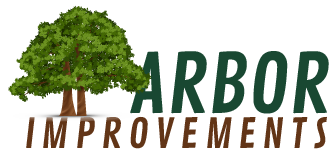As much as all of us love the shade trees on our property, most homeowners would agree that it is important that their trees are healthy and pose no risk to person or property. Even if your shade trees look like they are perfectly healthy, there might be issues that you aren’t able to see. It often takes the eye of a trained arborist to be able to properly assess your trees. Arbor Improvements is here to talk about why a tree risk assessment is so important.
What are the Components of a Tree Risk Assessment?
A tree risk assessment is the best way to know whether or not a tree is at risk of failing. When you turn to a skilled and trained arborist to complete a tree risk assessment on the trees that are located on your property, you will get a detailed report of all of their findings. They will let you know what level of risk your tree poses to your home and property. They will look at the condition of the soil, the distance the tree is to your house, recent damage and other risk factors. Losing a shade tree is devastating. With a tree risk assessment, catching problems early can help you save a tree before you get to that point. A licensed arborist will have the ability to calculate the chance of a complete or partial tree failure in a thorough tree risk assessment. Hopefully intervention can save your tree.
When Should You Have a Tree Risk Assessment Performed?
Sometimes homeowners look at their healthy trees and feel that a tree risk assessment isn’t necessary. Even trees that look and appear perfectly fine might have risks that could be uncovered in a tree risk assessment. It doesn’t matter how small or how large a tree is, a tree risk assessment should be done every three years. Of course, if you notice that there are visual problems with your tree, you can have a tree risk assessment done before that. You should have a tree risk assessment done if you notice any of the following:
– Obvious signs of decay
– Crowding buildings, power lines, pools, etc.
– Signs of insect damage
– Leaning, especially when leaning toward a structure
– Sidewalk & driveway upheaval due to tree roots
– Changes in soil
– Loss of windbreak
– Lightning strikes (after emergency personnel have been notified)
– Obvious signs of storm damage due to wind, hail, flood, earthquake, etc.
– Mottled or yellowing leaves
– Fungus or holes in the trunk, no matter how small
Tree Trimming, Removal & More in Greenville, Greer, Mauldin, Simpsonville, Union and Spartanburg, SC
If you have never had the trees on your property assessed or possible risk, it is time to contact the skilled arborists at Arbor Improvements to ensure your trees are healthy and pose no risk to your property. We have the training and expertise needed to keep your trees as healthy as possible. Call us today!


